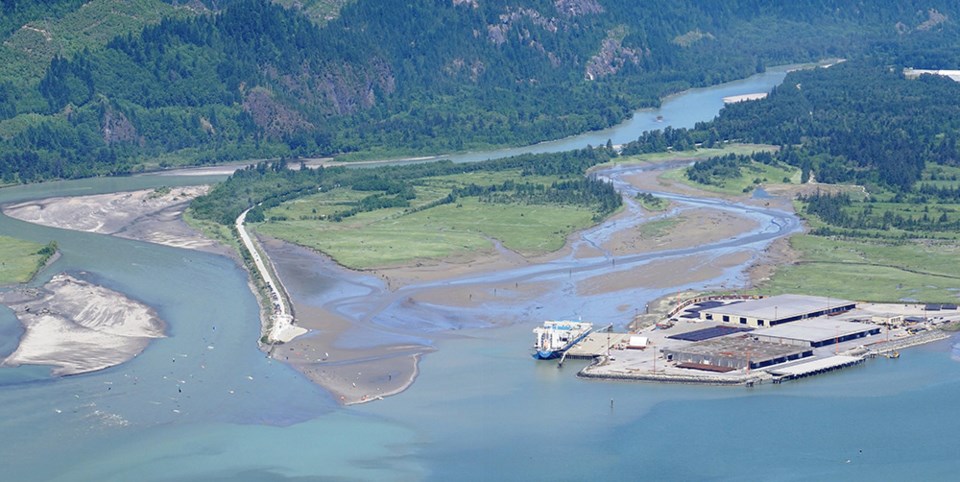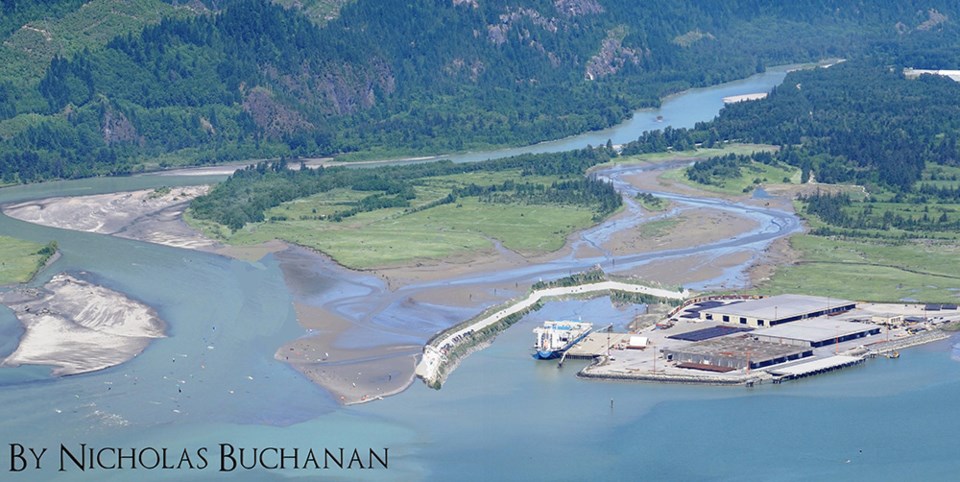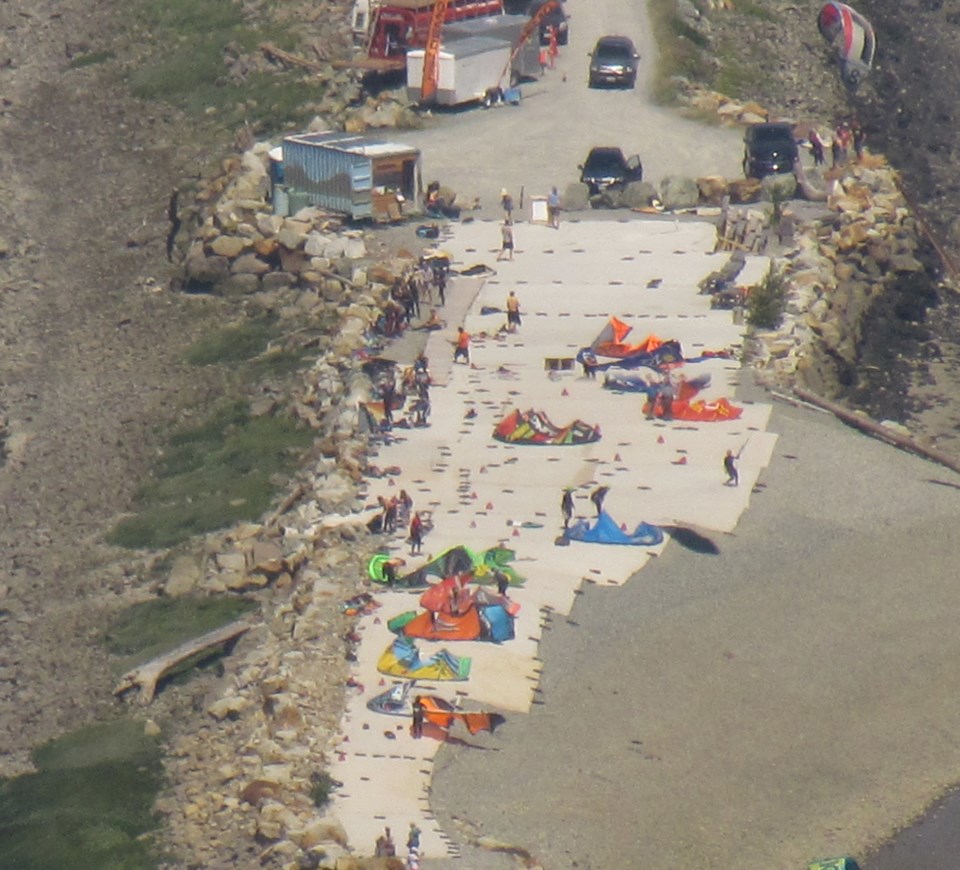The summers may be numbered for the Spit, at least in its current configuration.
Preliminary talks are underway about the possible eventual removal of the Squamish River Training Berm, better known as the Squamish Spit.
Edith Tobe, of the Squamish River Watershed Society, told The Chief that the society is in the early stages of exploring, as one of many options, upgrades to the culvert crossings along the berm “to better provide access to and from the Squamish River and the Squamish Estuary for salmonids, in particular chinook salmon.”
“Part of this study includes discussions with the Ministry of Forests, Lands and Natural Resource Operations, District of Squamish, Squamish Terminals, Squamish Nation, Fisheries and Oceans Canada, and the community to examine the feasibility of removing the training dike/Spit, as well as providing options around reducing sediment build-up around the berths at the Squamish Terminals,” Tobe said in an email to The Chief.
Conservationist John Buchanan, who has long called for the dismantling of the Spit, was emphatic in his response to the preliminary talks being underway.
“The dismantling of the training dike will be the single most important move this town has made for the environment in decades,” Buchanan told The Chief.
Originally built for a coal port that didn’t materialize, the Spit has contributed to a decline of chinook salmon in the Squamish River, figures from Fisheries and Oceans show.
From 1951 to 1970 there was an average of about 19,000 chinook salmon in the Squamish River. From 1971 to 1980, after the Spit was built, those numbers fell to an average of approximately 6,000.
Engaging all stakeholders is essential if the plan is to work, Buchanan stressed.
“I’m convinced that we can meet everyone’s economic needs, while at the same time saving our salmon,” he said.
The Spit’s removal is referenced in the District’s current draft of the Integrated Flood Hazard Management Plan.
Maintaining and protecting the Spit from sea level rise over the long term will be costly, according to the report. **
“As the District begins planning for a new sea dike, there is also an opportunity to consider the future of the existing training berm,” reads the latest Integrated Flood Management Plan.
Mayor Patricia Heintzman said the Spit does not provide any flood protection so a plan for it’s decommissioning is outside the scope of the flood management document. “Ideally, you would want to reintroduce the whole [Squamish] Estuary back together,” she said, adding when and if the Spit was decommissioned something new could be constructed that would work for wind sports.
She said one idea that has been floated since about the 1980s was to have a dike come closer to the north shores of the estuary and then jut out to where the head of the Spit is currently.
“You could bring all the windsurfers through downtown and you could build something purpose built,” she said.
This weekend the Spit is the site of the local kiteboarding community’s biggest event of the year, Kite Clash from June 30 to July 2. The event draws kiteboarders from around the world who compete in front of thousands of spectators.
Reached by phone out at the Spit preparing for this weekend’s event, Christopher Rollett, of the Squamish Windsports Society, said the society had not yet been engaged in discussions about its removal.
He said the society’s Spit lease agreement with the District is up for renewal at the end of this season.
Members of the society have plans to present at an upcoming council meeting about the economic and recreational value of the wind sports community and the importance of the Spit.
Heintzman said “a whole heap” of public consultation would take place to find a solution for the Spit that would be a “win-win for everybody.”
**Please note this story has been corrected since it was first posted to remove the word "too." The District report said that maintaining the training berm would be increasingly costsly, it did not conclude it would be "too" costly.






